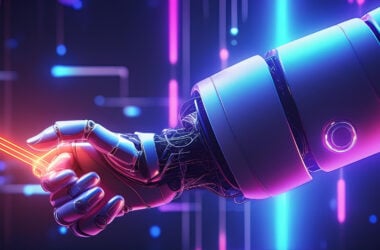Alibaba announced this week that its new AI can identify coronavirus infections with 96% accuracy.

Tomography (CT) imaging, also known as “CAT scanning” (Computerized Axial Tomography), provides a different form of imaging known as cross-sectional imaging
The Chinese tech giant research institute Damo Academy developed the AI-powered diagnosis system against digitised tomography scans also known as CAT scans. These are able to display a representation of a cross-section through a human body or other solid object using X-rays or ultrasound.
In testing, the algorithm could complete the disease recognition process within 20 seconds.
The researchers trained the AI model with sample data from more than 5,000 confirmed cases. The system could identify differences in scans between patients infected with the coronavirus and ordinary viral pneumonia with an accuracy of up to 96%.
While a human doctor can diagnose a patient using CT scans; that process can take around 5-to-15 minutes. While the AI can output a result within 20 seconds.
While we hope the algorithm can alleviate pressure on hospitals when it is rolled out across more than 100 hospitals in Hubei province later this month, sceptics have raised questions about the algorithm.
No information on the number of positive and negative samples in the dataset has been released. For instance, if a dataset included 9 positive samples and only 1 negative sample and the AI has a bias to predict positive samples it would be relatively straight-forward to get a 90% accuracy rate in testing by simply returning a positive result. Normally information on both false positives and false negatives are released alongside AI testing.
However, we remain hopeful the AI performs as well in the real-world as it is claimed it has done in testing. If the system works then it can save vital time for doctors on the ground.








